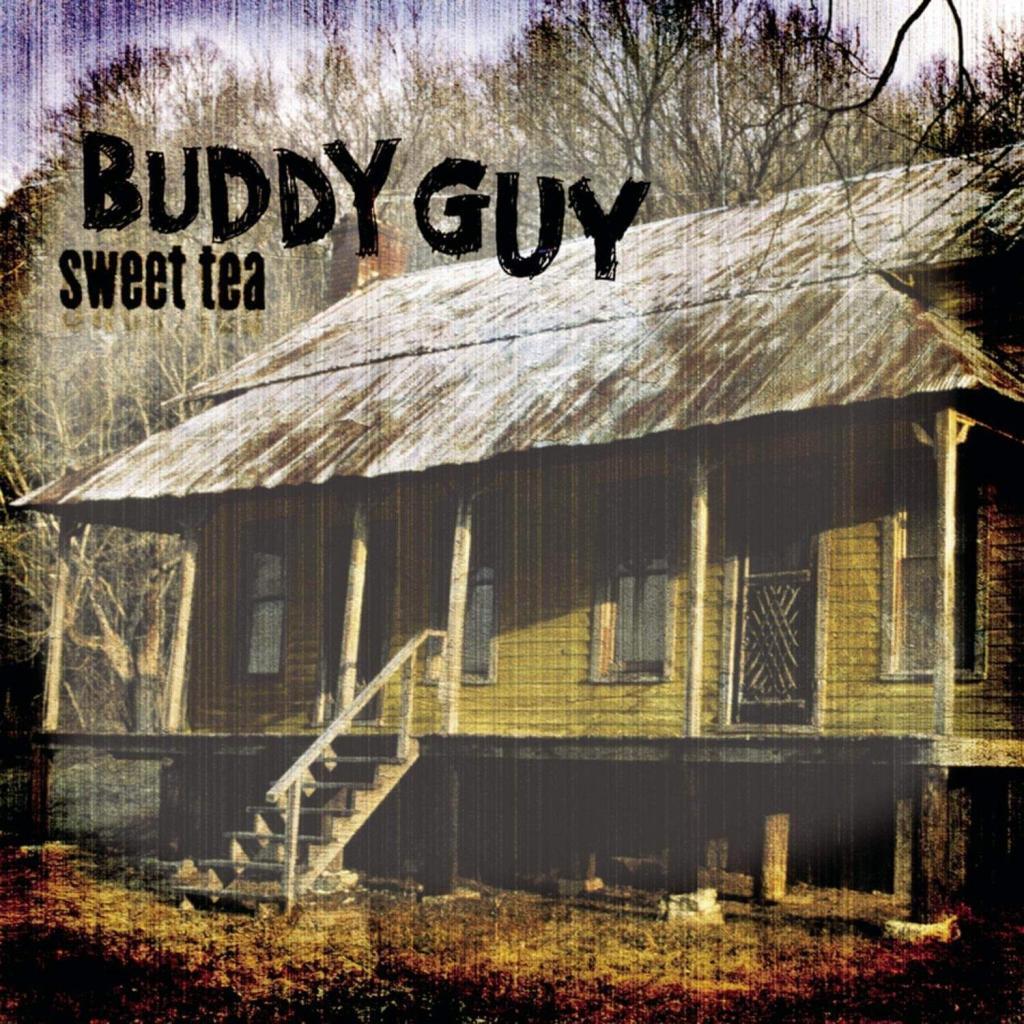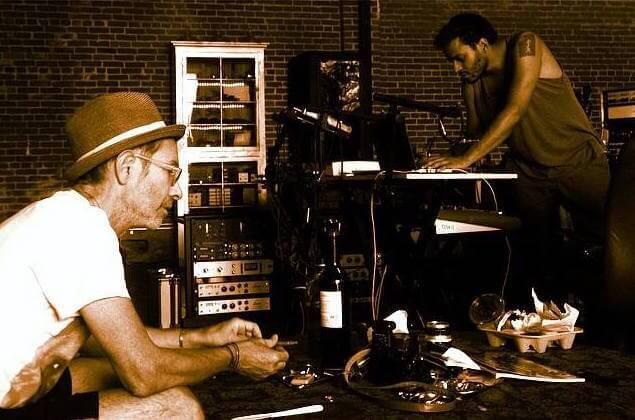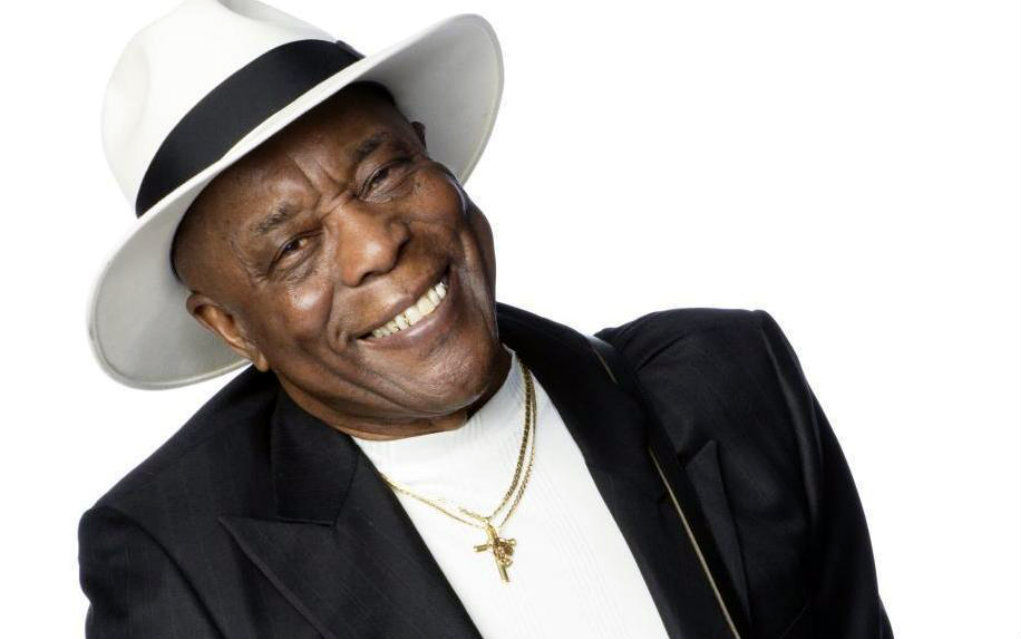Editor’s Note: Don Wilcock wrote Buddy Guy’s 1993 authorized biography, ‘Damn Right I’ve Got The Blues,’ that helped set the stage for his crossover from Chicago bluesman to pop music icon. Don is currently working on his fourth book, a memoir that will include a chapter on Buddy Guy.
“There’s a John Irving quote where he says, ‘You can’t will a home run,’ and it really is true,” explained Buddy Guy producer Dennis Herring in our 2009 interview. “You can set the stage. You can get the lights right. You can get the cognac over there, but you can’t will a home run. So, it’s a record I feel really proud of. It’s nice that it worked.”

He was talking about Sweet Tea. Herring produced both Sweet Tea (2001) and Blues Singer (2002). Blues Singer won a Grammy. Sweet Tea didn’t but it was Blues Revue’s pick as the best blues CD release in the first decade of the 21st century.
In our interview, Herring discussed the challenges of translating the mercurial energy of Buddy’s live concerts into a studio setting and explained how, as Buddy’s producer, he worked on a fundamentally shy artist to conjure up the bravado he has on stage and transfer it into a sterile studio setting. It was like squeezing toothpaste out of a tube.
“I really respect Buddy’s depth,” Herring said. “That fire was exactly what I wanted to see happen. Sometimes it happens: his electricity, that fire. There’s a thing about Buddy, and I’ve seen it live. I think it’s on Hoodoo Man (Junior Wells’ 1965 Delmark album) like a transcendence in his playing. He seems like he’s nearly possessed. There’s one part of his mind, and he’s now operating in another part, and I wanted that transcendence.”
The album was recorded in Mississippi hill country with delta musicians. “The stuff that showed up at the studio was a brand new Les Paul from Gibson in the box which had to be opened, and a brand-new Strat from Fender in a box. I was kinda bummed out. I was kinda freaked out. Here’s these two mediocre modern guitars, and then we’re dealin’ with one of the world’s greatest guitar players. Like this is lame. What are we gonna do? But I have a lot of old tube amps that Buddy definitely got off on. So, we got those guitars out and plugged in, and he sounded great. He just starts playin’ ’em, and it sounds like Buddy Guy and you go, ‘Oh, well, see, it’s 80 percent hands.’
“I instructed the engineer before we ever started that the band would never hear the music played back quietly. It would never be played back in any kind of critical way. They were always in the live environment, and they never got to think, ‘Oh, I guess I played that a little out of tune,’ because if they were listening quiet enough, they could notice that, or ‘I guess my pocket could have been better here.’ I’ve wanted to try and avoid that style of thinking and instead keep ’em in this hyped mode, loud and exciting. It’s like doing shows.”
It was just that kind of thinking that turned Leonard Chess off to Buddy early in his career at Chess Records where Buddy spent most of this time playing backup for Muddy Waters, Sonny Boy and Big Mama Thornton. It would take Buddy almost three decades to capture a mass market for his unique level of high energy flamboyance.
The night it really hit home for me as his biographer was at the Royal Albert Hall in London in 1990. He did six nights in a row with Eric Clapton, and on the fourth night Clapton was up there looking for Buddy to come out from backstage. Instead, he came right down the left aisle playing his guitar and jumped up on the stage, completely throwing off his friend Eric.
Around the same time at the Legends of the Blues concert at Avery Fischer Hall in New York City, Warren Haynes and many old blues guys were already on stage, and Buddy came out and wiped up the stage with ’em. Everybody else became superfluous.
Herring calculatingly worked to create the same atmosphere in the studio. “I would jam with him while he played solos, and the first time I did it, it was crazy. You could tell that he was getting off. I mean it made him go deeper and deeper into his solo. It got to where I would keep an eye out and do that often. So, we would just kinda jam. He wouldn’t catch everything exactly right, but mostly you could get a real flow going, and I think that also really brought a lot out of his playing. I think that helped add a notch of intensity to the thing.
“He was in it more of his live way. If you’ve seen pictures of my studio, it’s lamp lit and dark. It’s more of a live atmosphere in a lot of ways. There’s no lab coat element to it.”

Herring grew up listening to the Brits Beck, Clapton, and Page. “As soon as I started learning about them, I started to learn about Buddy. Then, I learned about Hendrix. I grew up learning all these people’s solos, learning how to play like them and to some extent developing my own style at least in the studio guy kind of way. I played solos and their solos, so I know how these guys play, so I think that’s where if you have the ability to play a solo like Buddy Guy, you can get down there to an amp and you can kind of go, ‘I know he’s goin’ now. We’re goin’ now. Here we go! Oh, he’s gonna back off. I feel it! I need to help him back off.’”
The producer/artist relationship is unique: part brothers, part bromance but with a goal of capturing that part of a musician’s soul that makes millions fall in love with their music. “The record company sent a photographer in one day to take a few pictures of him in the studio. Far as I know, they haven’t gotten used for much of anything. I never saw ’em around anywhere, but there’s one where he and I are sitting on the couch, and the photographer wanted to take a picture of the two of us, and right before the guy takes the picture, Buddy leans over and goes, ‘This stuff is so full of shit.’
“Then we both started dying laughing and the guy took our picture. A picture of him and I laughing, and only he and I know what we’re laughing about. Buddy probably knew I could relate to what he was saying. He could see the shyness in me in those situations. He was also sharing with me what it’s really like for him. He’s like, ‘Yeah, this is bullshit.’
“Playing stuff is where I saw that guy be for real. That’s where it’s real. That to me is the part I understood best about him.”

